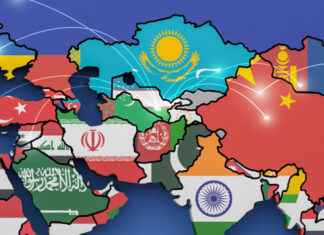Ireland, like the UK, will hold an election in two years. But while in London some hope and others fear the end of almost a decade and a half of Conservative rule –and the arrival of Labour–, in Dublin the turnaround could be even more radical, if the polls are not wrong (there are precedents), with the first coming to power of the radical left-wing Sinn Féin and long the political wing of the IRA.
It goes without saying that the Irish businessmen, for purely economic considerations and without entering into the party’s ties with the armed gang that disarmed on their own initiative, are not a bit happy about the possibility of a Sinn Féin government. Some say it and others don’t. Leading among the former is Michael O’Leary, the chairman of Ryanair’s board of directors, who has threatened to move the low-cost airline’s headquarters to another country (it is now based on the outskirts of Dublin) if the The next taoiseach (prime minister) dares to raise corporate tax to 12.5%, one of the most competitive rates in the world.
After the trauma of the pandemic, which confined the entire world, Ryanair (the fifth global airline in terms of capacity, with 167 million passengers this year and the prospect of 185 million next year) returns to profit. From May to September they amounted to almost 1,370 million euros, compared to losses of 48 million in the same period of 2021, and total income of 6,600 million. While most airlines warn of a very complicated outlook due to the aftermath of the virus, the war in Ukraine, inflation and the increase in the cost of fuel, and as a consequence they are reducing capacity, O’Leary sees it rosy and has ordered 51 planes of the new version of the Boeing 737 that he expects the Seattle aeronautical firm to deliver before the start of the summer. The last thing you want is for a change of government in Ireland, the arrival of Sinn Féin and a tax increase to complicate your ambitious growth plans.
Ryanair was founded in 1985 by the Ryan family (hence its name) with a single propeller plane that operated from the Irish city of Waterford (53,000 inhabitants) to the English airport of Gatwick, and only had 25 employees. The first year it only carried 5,000 passengers, but soon after it began to compete with British Airways and Aer Lingus on the Dublin-London route, even offering business class seats, something unthinkable today.
Its great springboard was to adopt the low cost model, as Southwest had done before in the United States. With Stansted as its main hub, it currently travels to 230 cities in 36 countries, with average fares of 40 euros, which will rise to 50 next year due to the increase in the cost of fuel. “When my colleagues ask me how I’m going to keep prices down, I tell them the thing to do is lower them, and they’re stunned.”
Ryanair’s formula is not without controversy, due to the usual basic services in the sector that it denies its customers, the narrowness of the seats, the need to print your boarding pass yourself (under penalty of a fine) or aggressiveness with which he negotiates with the airports and the authorities the cost of the landing permits, threatening if necessary to abandon the cities as destinations. Tickets are not its main source of income, but on-board sales, online betting, hotel reservations and car rentals for its passengers.
O’Leary, a 71-year-old Dubliner often criticized as arrogant, was the Ryan family’s tax adviser, rising to Ryanair’s chief financial officer, chief executive and chairman. The 3.9% of shares that it has in the airline are worth, at the current price, almost 600 million euros, and in its worst nightmares Sinn Féin wins the elections, imposes a tax on great fortunes, raises the income and that of companies. If any of that happens, he warns, we’ll pack our bags, put them in the hold of one of our shiny new Boeings, and take the music elsewhere.








